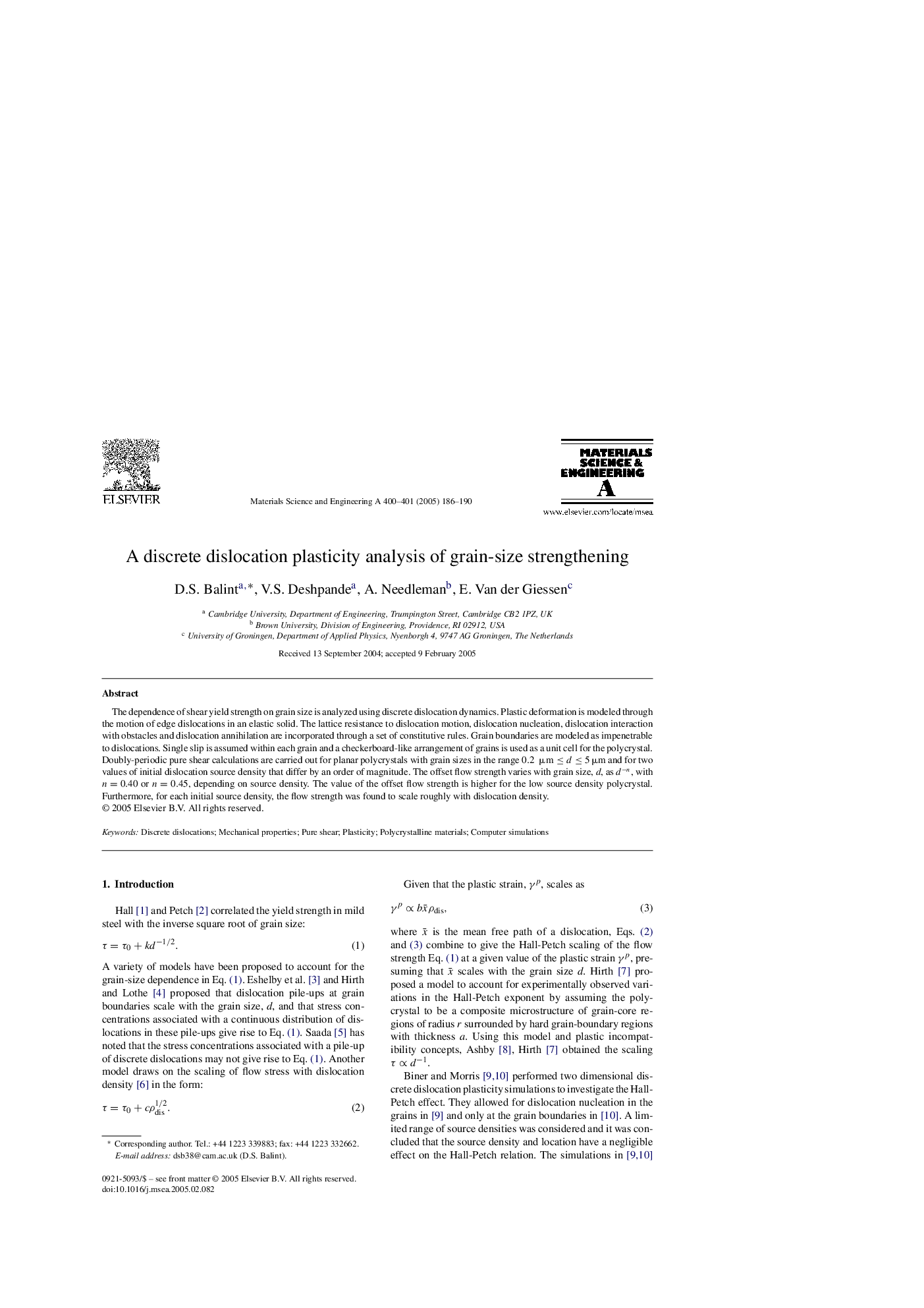| Article ID | Journal | Published Year | Pages | File Type |
|---|---|---|---|---|
| 9796104 | Materials Science and Engineering: A | 2005 | 5 Pages |
Abstract
The dependence of shear yield strength on grain size is analyzed using discrete dislocation dynamics. Plastic deformation is modeled through the motion of edge dislocations in an elastic solid. The lattice resistance to dislocation motion, dislocation nucleation, dislocation interaction with obstacles and dislocation annihilation are incorporated through a set of constitutive rules. Grain boundaries are modeled as impenetrable to dislocations. Single slip is assumed within each grain and a checkerboard-like arrangement of grains is used as a unit cell for the polycrystal. Doubly-periodic pure shear calculations are carried out for planar polycrystals with grain sizes in the range 0.2μmâ¤dâ¤5âμ m and for two values of initial dislocation source density that differ by an order of magnitude. The offset flow strength varies with grain size, d, as dân, with n=0.40 or n=0.45, depending on source density. The value of the offset flow strength is higher for the low source density polycrystal. Furthermore, for each initial source density, the flow strength was found to scale roughly with dislocation density.
Keywords
Related Topics
Physical Sciences and Engineering
Materials Science
Materials Science (General)
Authors
D.S. Balint, V.S. Deshpande, A. Needleman, E. Van der Giessen,
